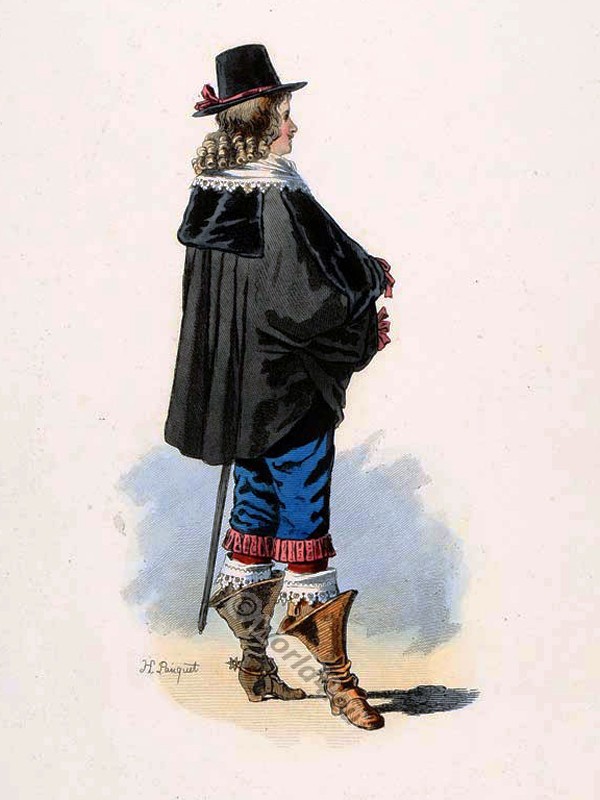
5, 7, 6
4, 2, 1, 3
FRANCE XVII. CENTURY FEMALE COSTUME.
Female headdress and costumes under the reign of Louis XIV.
The costumes depicted here belong to the second half of the reign of Louis XIV and the end of the 17th century. No. 1 can be considered typical for the last quarter of the century.
The Fontange.
The first characteristic feature is the large headdress, called Fontange after the king’s mistress, who asserted his dominion from 1680 to 1701. It consisted of a top piece of stiffened linen, sometimes rising to the ridiculous height of two and three feet, rolled up like the organ pipes and decorated with bows, embroidered and coloured muslin, feathers, flowers and pearls.
A frame of iron wire was used to maintain this construction. Long barbels (binding bands) fell down on the back. The two curls hanging down from the hairstyle onto the forehead were called ‘cruches’ (jugs). At the back the hair was usually tied in a knot (paquet).
The waist is stiff, tightly laced and tapered towards the bottom. The sleeves are short and cuffed, with Alençon or Valenciennes lace on the inside. A tight pearl necklace, a cravatte called squinquerque and long gloves complete this part of the toilet.
The upper skirt is wide open at the front, folded backwards and ends in a train. The decoration of the lower skirt consists of the so-called falbalas, frill-like folded horizontal stripes, which were initially worn only at the bottom, but later extended over the entire skirt, and the Préttintailles, simple braids that were placed vertically on the dress. Pointed shoes with high heels were added to enhance the impression of slimness and slenderness that the whole costume evokes.
The representations of No. 2 and 3 differ from this general type only in details.
No. 2 is characterized by a richer trimming of the skirt with horizontal and vertical stripes. The bodice of no. 3 is decorated with a series of bows, which were called échelle (ladder) after their arrangement. The skirt is interwoven with silver and decorated with horizontal stripes.
No. 4 is a ball costume of the highest luxury. The hair is arranged similar to the male state wig. Two curls fall down on the neck and chest. The fine white sleeve is decorated with a ribbon held by a diamond. On the right side a small muff hangs down, with a red golden bow. The ermine lined coat is attached to the shoulder. At nos. 5, 6, 7 you can see how the upper skirt, gathered together at the back, was treated while sitting.
Figures 1, 2, 3, 5, 6 are copied after a painted stove screen, figures 4 and 7 after engravings by Robert Bonnart.
Source: History of the costume in chronological development by Auguste Racinet. Edited by Adolf Rosenberg. Berlin 1888.
Related
Discover more from World4 Costume Culture History
Subscribe to get the latest posts sent to your email.







